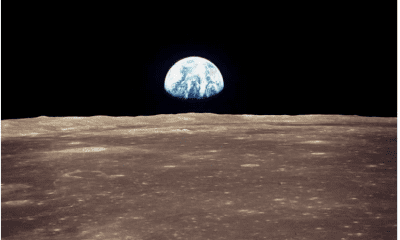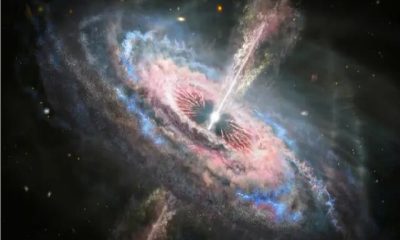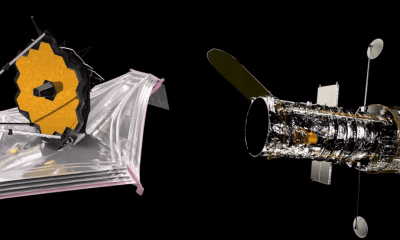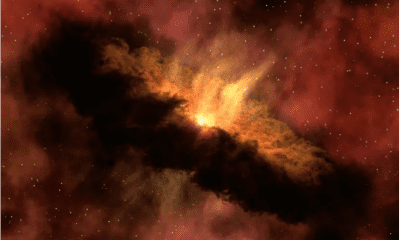Space
Ceres, the closest dwarf planet to Earth
Published
7 months agoon
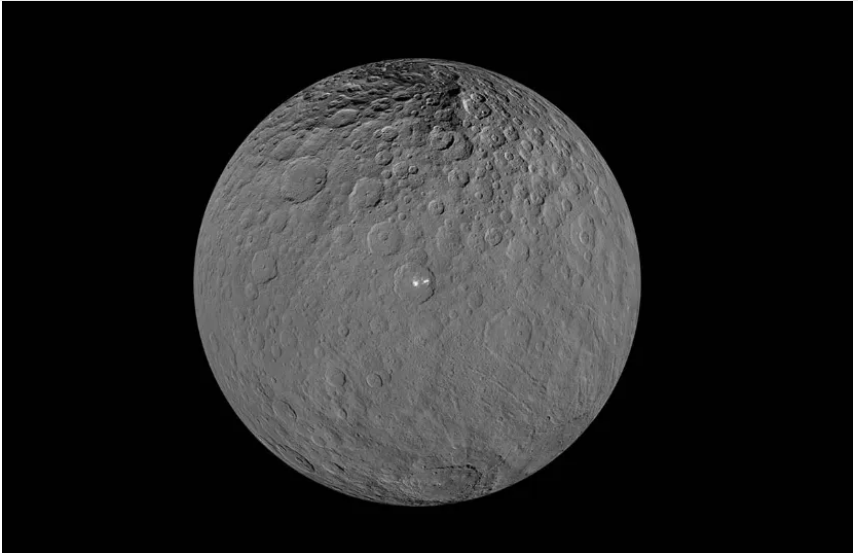

Ceres, the closest dwarf planet to Earth
Ceres is the closest dwarf planet to Earth and the largest mass in the asteroid belt between Mars and Jupiter. Since the discovery of Ceres in 1801, this dwarf planet has had various identities. At first, this body was thought to be a planet. Then it was determined that it was too small to be defined as a planet and it was placed in the asteroid group.
In 2006, a year after the discovery of a small object called Eris in the Kuiper Belt, Ceres was officially classified as a dwarf planet. The discovery of Eris and other objects neighboring Pluto, which are located beyond the orbit of Neptune, showed that we need to distinguish planets and small objects such as asteroids and inhabitants of the Kuiper belt from each other.
Regardless of what we call Ceres, it is a ball of rock and ice with a diameter of 953 kilometers and is the largest object in the asteroid belt between Mars and Jupiter that orbits the Sun.
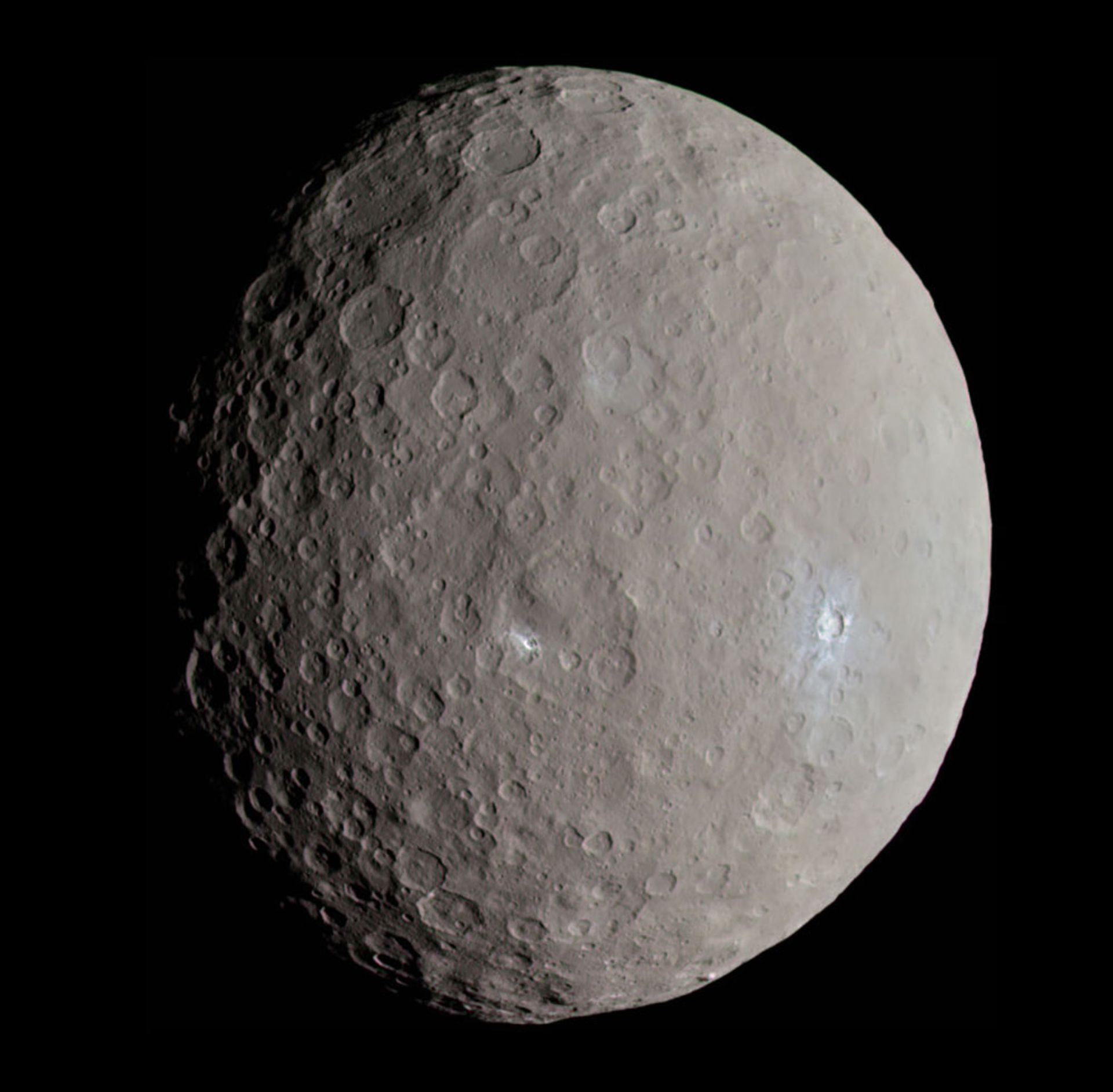 Ceres as seen by the Dawn probe, May 2015
Ceres as seen by the Dawn probe, May 2015
Discover Ceres
By the end of the 18th century, astronomers were convinced that there was another planet between Mars and Jupiter. They came to this conclusion based on the Titus-Boude rule; Which was based on the research of two German astronomers of the 18th century, Johann Daniel Titus and Johann Ellert is called by this name and describes the apparent pattern of the distance between the orbits of the planets of the solar system. According to this rule, there must be a planet in the wide gap between Mars and Jupiter.
For this purpose, a group of astronomers who called themselves the sky police searched for the unknown planet; But the Italian astronomer Giuseppe Piazzi was the first person to discover this object. At first, the problem was thought to be solved with the discovery of Ceres, but soon more objects were found between Mars and Jupiter.
For example, Pallas was discovered in 1802, Juno in 1804, and Vesta in 1807. But it was not possible that all these bodies were planets; because both their dimensions were very small and unlike Mars and Jupiter, they could not be easily identified with a telescope; Therefore, they were placed in a new category called asteroids.
Since then, more than a million asteroids have been discovered in the main asteroid belt. Ceres is the largest object in the asteroid belt, and Vesta is second with a diameter of 530 km.
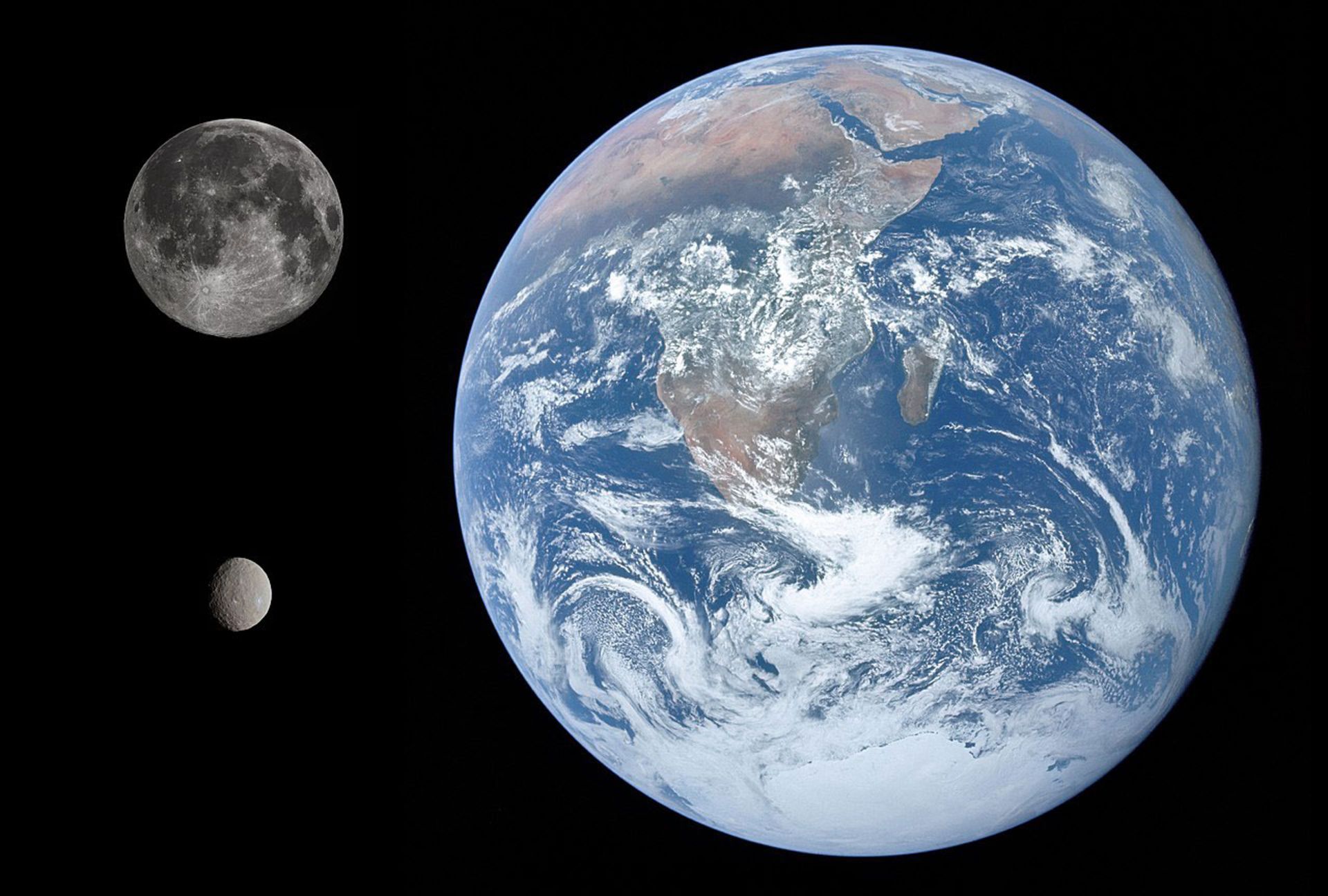 Ceres compared to the Moon and Earth.
Ceres compared to the Moon and Earth.
Ceres, the closest dwarf planet to Earth
Naming Ceres
In the 18th and 19th centuries, astronomers named discovered objects after their patrons. For example, William Herschel initially chose the name “Georgium Sidus” for Uranus, which was derived from the name of King George III. However, astronomers outside of Britain disagreed with this designation.
Similarly, Piazzi also discovered Ceres and wanted to name it “Ceres Ferdinandia” after the inspiration of King Ferdinand of Sicily, who founded the Palermo observatory and the place of discovery of Ceres. Finally, the reference to the king’s name was removed from this crime; But the name of Ceres, the Roman god of agriculture and fertility, remained on it.
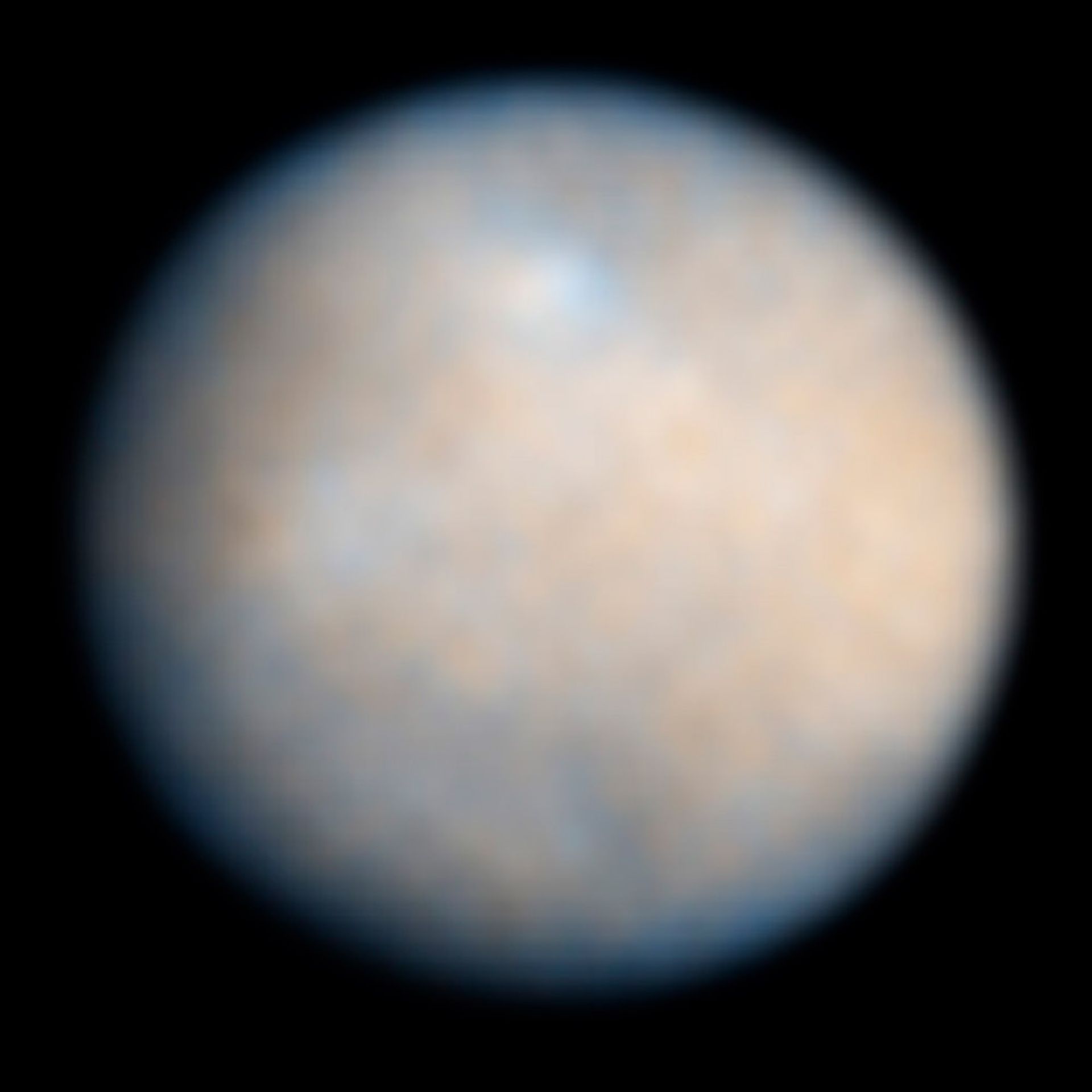 Enhanced Hubble Space Telescope image of Ceres.
Enhanced Hubble Space Telescope image of Ceres.
Features of Ceres
Ceres is located between the orbits of Mars and Jupiter. Its elliptical orbit makes this dwarf planet 2.55 AU or 381 million km from the Sun at its closest point and 2.98 AU or 446 million km from the Sun at its furthest point.
One Ceres year is equal to 4.6 years or 1682 Earth days. Ceres’ days are much shorter than Earth’s, so Ceres orbits in 9 hours.
Life on Ceres would certainly not be fun. This dwarf planet has no atmosphere, so you need a space suit to walk on it. The temperature of Ceres on the day side reaches minus 93 to 33 degrees Celsius and the night temperature drops to minus 143 degrees Celsius.
The gravity of Ceres is only 3% of the gravity on Earth; So if you weigh 68kg on Earth, you’ll feel much lighter on Ceres, at just 2.04kg.
Read More: “Hubble Space Telescope” and its achievements in astronomy
Ceres, the closest dwarf planet to Earth
Ceres and other dwarf planets
Ceres is the closest dwarf planet to Earth compared to other dwarf planets that are located at a very far distance in the Kuiper-Praneptonian belt. This planet has similarities to other dwarf planets like Pluto and Eris.
Unlike other dwarf planets, most of Ceres is made of rock
For example, Ceres is a remnant of the formation of the solar system. Ceres was initially in the form of a protoplanet that could not reach sufficient planetary dimensions. However, Ceres has differences in composition. Much of this dwarf planet is made up of rock, while Pluto and its neighbors are mostly ice.
Of course, Ceres has some ice and its overall density is about 2 to 2.3 grams per cubic centimeter, which is very low for a rocky planet. This feature shows that a quarter of Ceres is made up of ice, some of which are in the surface rocks and the other part is in the subsurface layers.
Discoveries of Ceres
In 2015, NASA’s Dawn probe, which visited Vesta, headed toward the dwarf planet Ceres. As the probe approached Ceres, it photographed the bright spot on the planet’s surface. This spot is actually a region of glowing parts known as Cerealia Facula. Upon closer inspection, hundreds of glowing fragments were discovered on Ceres. At first, scientists thought that these glowing parts were made of ice.
By recording more detailed images, it was found that the mentioned areas are actually large parts of white sediments in the 92 km impact crater known as Okator. These spots were not actually ice, but the remaining sodium carbonate from the salt water that reached the surface and left behind sediments with their sublimation.
 This artist rendering shows NASA’s Dawn spacecraft orbiting Ceres.
This artist rendering shows NASA’s Dawn spacecraft orbiting Ceres.
How can water exist on a large airless mass? Dawn mission data show that the brine originates from a reservoir at a depth of 40 km below the impact surface, and the sodium carbonate deposit has been brought to the surface through glaciers since 9 million years ago; That is, when the geysers brought liquids to the surface. This process appears to be continuous, as the Dawn probe has detected some water in the sodium carbonate deposits, and since water must be sublimated quickly in a vacuum, the resulting water is likely fresh.
The amount of groundwater is uncertain. If we can divide Ceres into two parts, we will notice its difference; Therefore, when Ceres was formed, its interior was hot enough to split into several different layers. So that its densest materials moved towards the core.
The core of Ceres is made of rock and soil. Above the iron core is a layer of saltwater ice that extends to a distance of 100 km below the surface and is probably deeper. The outer layer of the crust with a thickness of 40 km is composed of regolith, salty minerals, and ice.
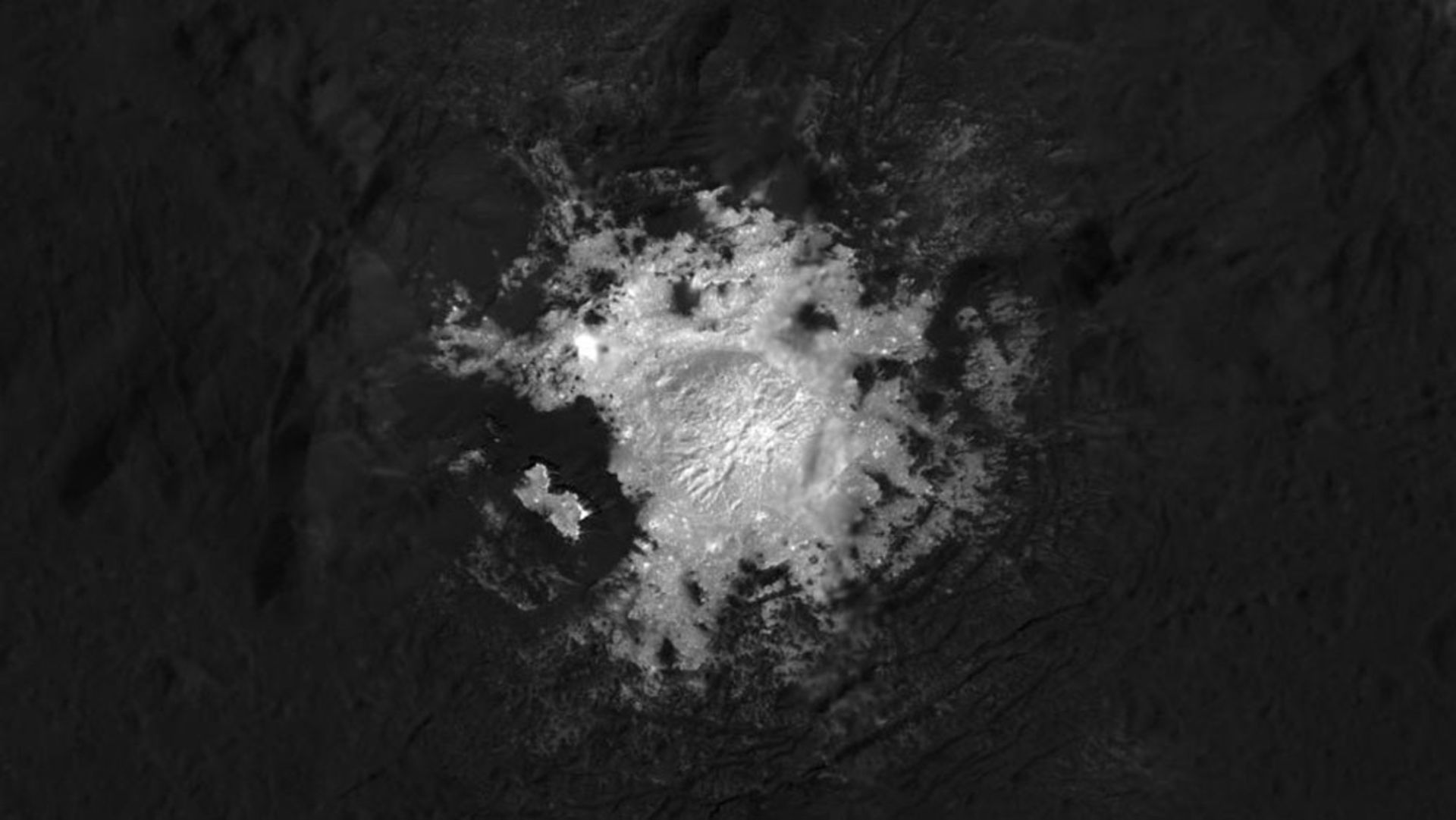 White salt deposits of Cerealia Facula in Ekator crater.
White salt deposits of Cerealia Facula in Ekator crater.
Ceres, the closest dwarf planet to Earth
Life on Ceres
The possibility of life on Ceres is unlikely due to the high salinity level and low temperature; But due to the presence of water, this possibility cannot be ignored. Additionally, life may have existed on this dwarf planet in the past when Ceres was hotter.
Ceres is also considered as an oceanic world, along with the moon of Europa, the moon of Jupiter, and Enceladus, the moon of Saturn has attracted the attention of scientists. For this purpose, in the ten-year review of planetary sciences in 2023, the Ceres sampling mission is considered as one of the priorities. If life exists on Ceres, it will be in the form of simple microbial life.
Ceres facts
- Ceres was the first object to be confirmed as an asteroid. Italian astronomer Giuseppe Piazzi discovered and named Ceres in early 1801.
- Ceres was first visited in 2015. NASA’s Dawn probe began its journey from the asteroid Vesta to Ceres in September 2012. Ceres was the first dwarf planet to be visited by a probe and is considered one of the possible destinations for human colonization due to its abundant ice, water, and minerals.
- Ceres is the only dwarf planet without a moon. Other dwarf planets such as Pluto, Haumea, Makimaki, and Eris have at least one moon.
Conclusion
Ceres, the largest body in the asteroid belt and the closest dwarf planet to Earth is composed of rock and ice. This object was first discovered in the 19th century by the Italian astronomer Giuseppe Piazzi and was classified as a planet. However, later observations put it in the definition of an asteroid.
Ceres finally fit the definition of a dwarf planet after closer examination. NASA’s Dawn probe first visited the dwarf planet in 2015 and discovered surprising observations such as bright white spots or sodium carbonate deposits. Unlike other dwarf planets, Ceres has no moons.


You may like


Why is it still difficult to land on the moon?
This year, the private company Spacel and the Indian Space Organization both met tragic ends when they tried to land their spacecraft on the surface of the moon. Despite the astonishing leaps made in recent decades in computing, artificial intelligence and other technologies, it seems that landing on the moon should be easier now; But recent setbacks show that we still have a long way to go with safe and trouble-free landings on the surface of Earth’s only moon.
50 years after sending the first man to the surface of the moon, the question arises as to why safely landing a spacecraft on Earth’s nearest cosmic neighbor is still a difficult task for space agencies and private space companies. Stay with Zoomit to check the answer to this question.
Why is the lunar landing associated with 15 minutes of fear?
Despite the complexities of any space mission, sending an object from Earth into orbit around the moon today is easy. Christopher Riley, the director of the documentary film In the Shadow of the Moon produced in 2007 and the author of the book Where We Stood (2019), both of which are about the history of the Apollo 11 mission, explained the reasons for the difficulty of landing on the moon in an interview with Digital Trends. is According to him: “Today, the paths between the Earth and the Moon are well known, and it is easy to predict them and fly inside them.”
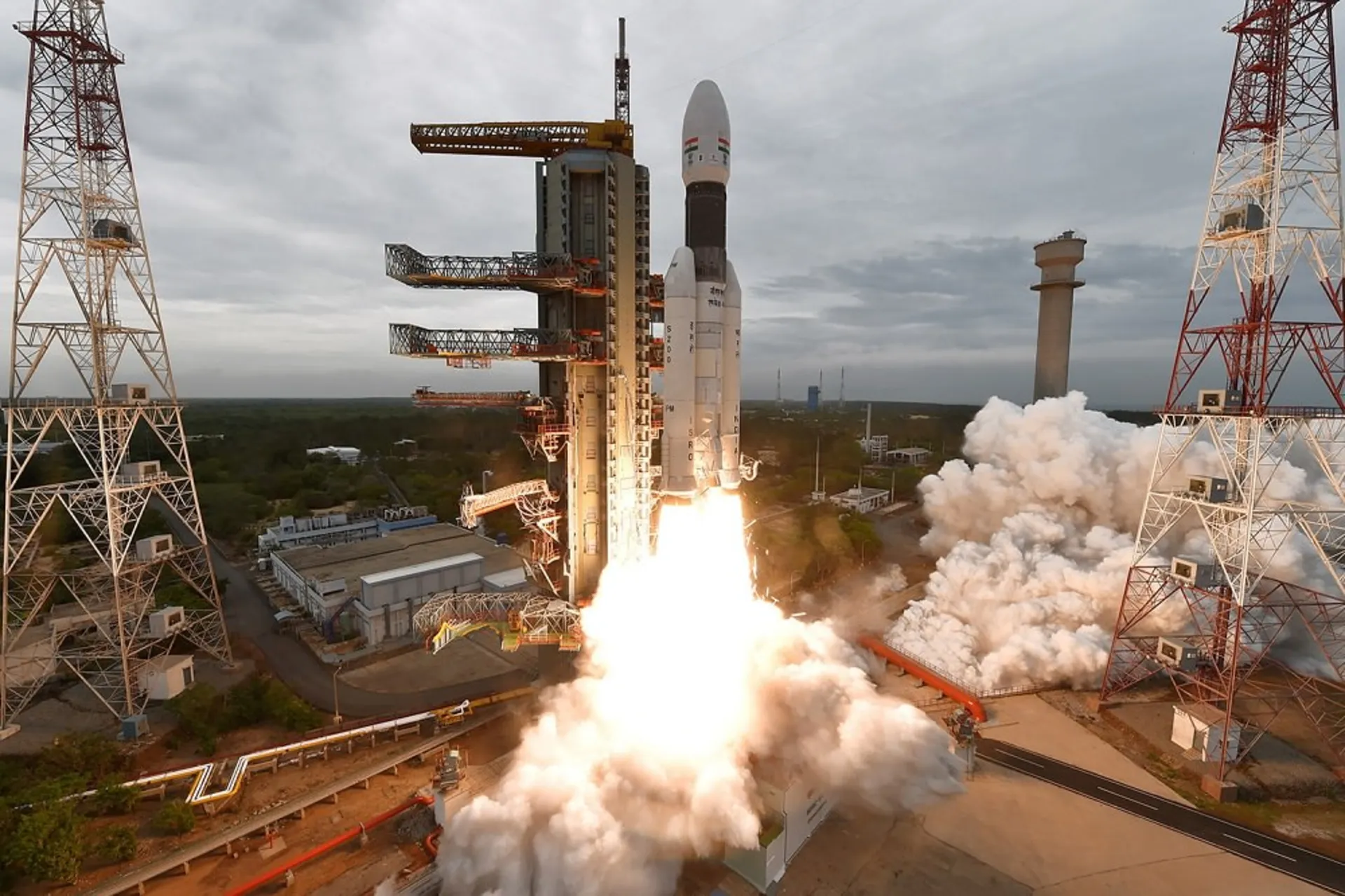
Chandrayaan 2 mission launch
However, the real challenge is getting the spacecraft out of orbit and landing it on the lunar surface; Because there is a delay in the communication between the Earth and the Moon, and the people in the control room who are present on the Earth cannot manually control the spacecraft in order to land it safely on the Moon. As a result, the spacecraft must descend automatically, and to do so, it will fire its descent engines to slow its speed from thousands of kilometers per hour to about one meter per second, in order to make a safe landing on the lunar surface.
For this reason, the director of the Indian Space Research Organization (ISRO), who was trying to land the Vikram lander last month, described the final descent of the spacecraft as “frightening 15 minutes”; Because as soon as the spacecraft enters the landing stage, the control of its status is out of the hands of the mission control members. They can only watch the spacecraft land and hope that everything goes according to plan, that hundreds of commands are executed correctly, and that the automatic landing systems gently bring the spacecraft closer to the surface of the moon.
The Great Unknown: The Landing Surface
One of the biggest challenges in the final descent phase is identifying the type of landing site. Despite the availability of instruments such as the Lunar Reconnaissance Orbiter (LRO) that can capture amazing views of the lunar surface, it is still difficult to know what kind of surface the spacecraft will encounter when it lands on the moon.
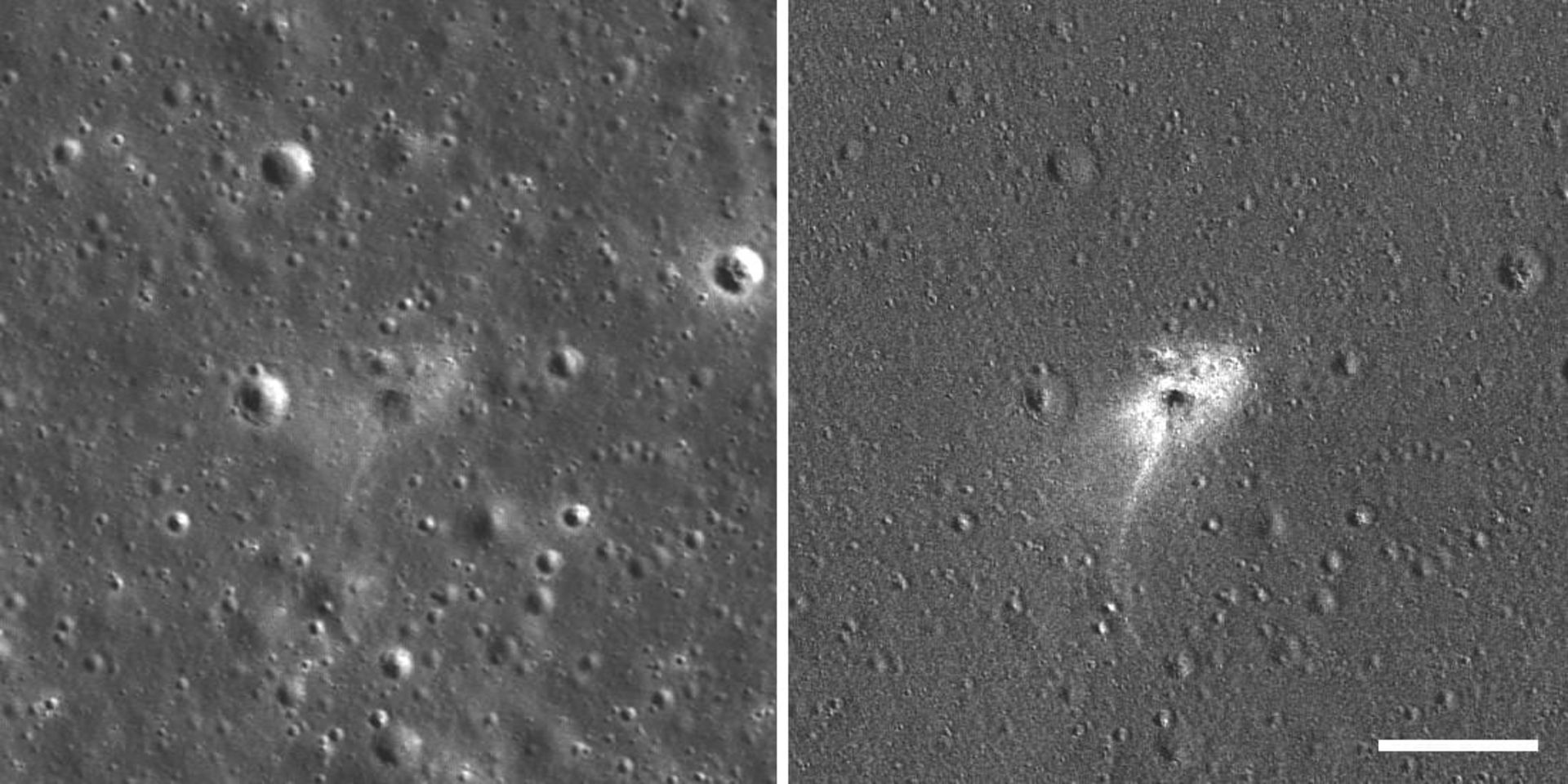
Left: Breshit crash site. Right: The ratio of the before and after images highlights the occurrence of minor changes in surface brightness.
Leonard David, author of Moon Fever: The New Space Race (2019) and veteran space reporter, says:
The Lunar Reconnaissance Orbiter is a very valuable asset that has performed really well over the years; But when you get a few meters above the surface of the moon, complications appear that cannot be seen even with the very powerful LRO camera.
Even today, despite the imaging data available, “some landing sites still have unknown remains,” Riley says. He notes that the Apollo 11 mission included an advantage that today’s unmanned landers lack, which is the presence of an astronaut’s observer’s eyes that can closely observe the surface of the spacecraft’s landing site. As you probably know, in the mission that led to the landing of the first man on the surface of the moon, the Eagle computer was guiding the spacecraft to a place full of boulders; But to avoid hitting the rocky surface of the moon, Armstrong took control of the spacecraft himself and landed it on a flat surface.
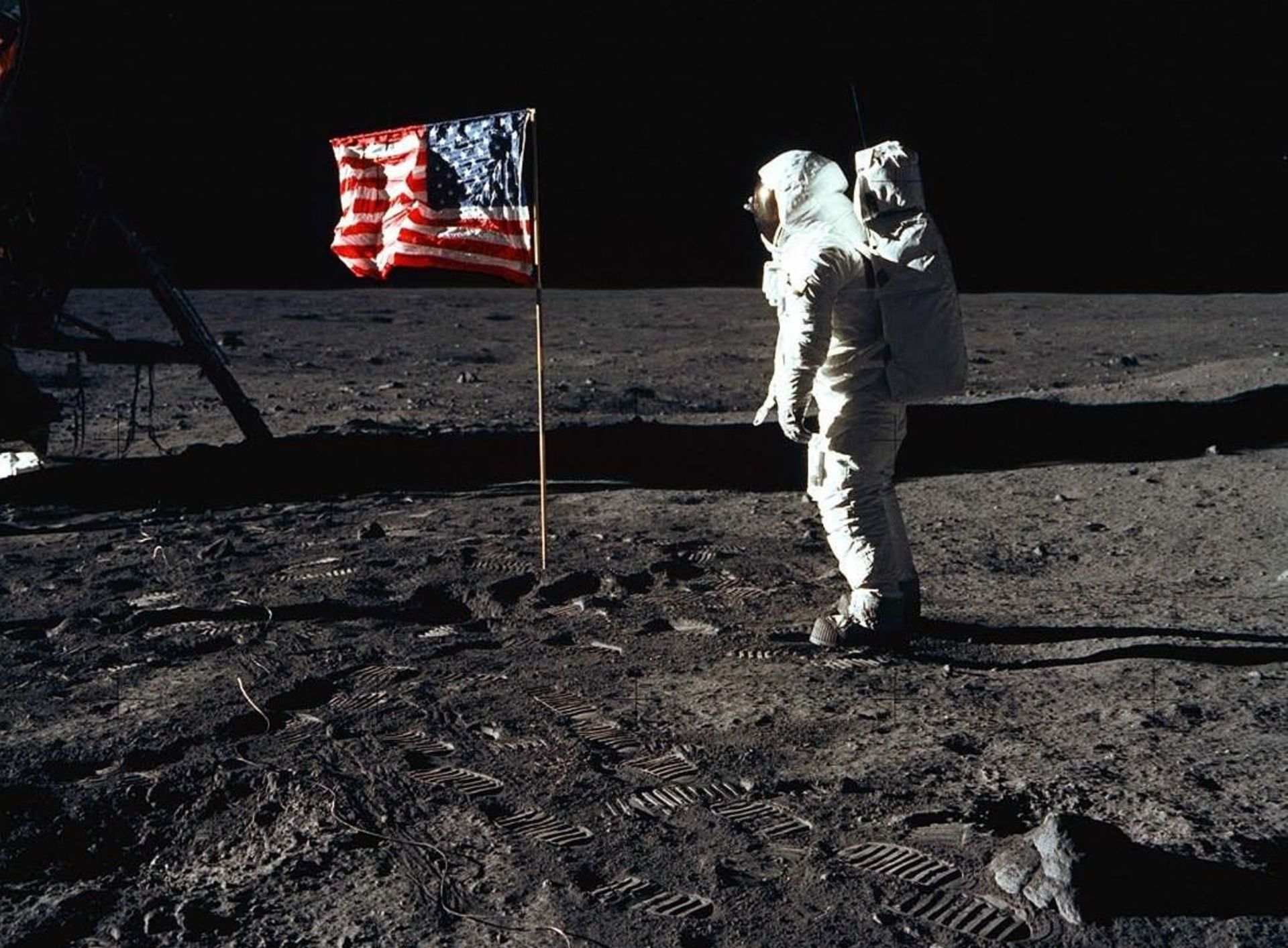
The uneven surface of the landing site had caused many problems in previous lunar missions such as Apollo 15. In this mission, the astronauts were told that as soon as the spacecraft touched the surface of the moon, they should turn off the engines to prevent dust from being sucked in and the risk of a return explosion. But the Apollo 15 spacecraft landed in a crater, and because of this, one of its legs came into contact with the surface earlier than the others. When the crew shut down the engines, the spacecraft, moving at a speed of 1.2 meters per second, experienced a hard landing. The lander landed at an oblique angle, and although it eventually landed safely, it nearly overturned, causing a fatal disaster.
- Half a century after Apollo 11; How did the great human leap happen?
- dust storms; The nightmare of space missions to the moon
The difficult landing of Apollo 15 introduced another complicating factor in lunar landings: lunar dust. The Earth’s moon is covered with dust that is thrown into the air by any movement and sticks to everything it comes in contact with. As the spacecraft approaches the surface of the moon, huge plumes of dust are kicked up that limit the field of view and endanger the spacecraft’s electronics and other systems. We still do not have a solution to deal with the dust problem.
An achievement that has been achieved before
Another reason why the moon landing remains a challenge is that gaining public support for lunar projects seems difficult. Referring to Neil Armstrong and Buzz Aldrin, the two astronauts who walked on the moon during the Apollo 11 mission, David says, “We convinced ourselves that we had sent Neil and Buzz [to the surface of the moon]; “As a result, when it comes to lunar missions, people may say we’ve been there before and we’ve had this success.”
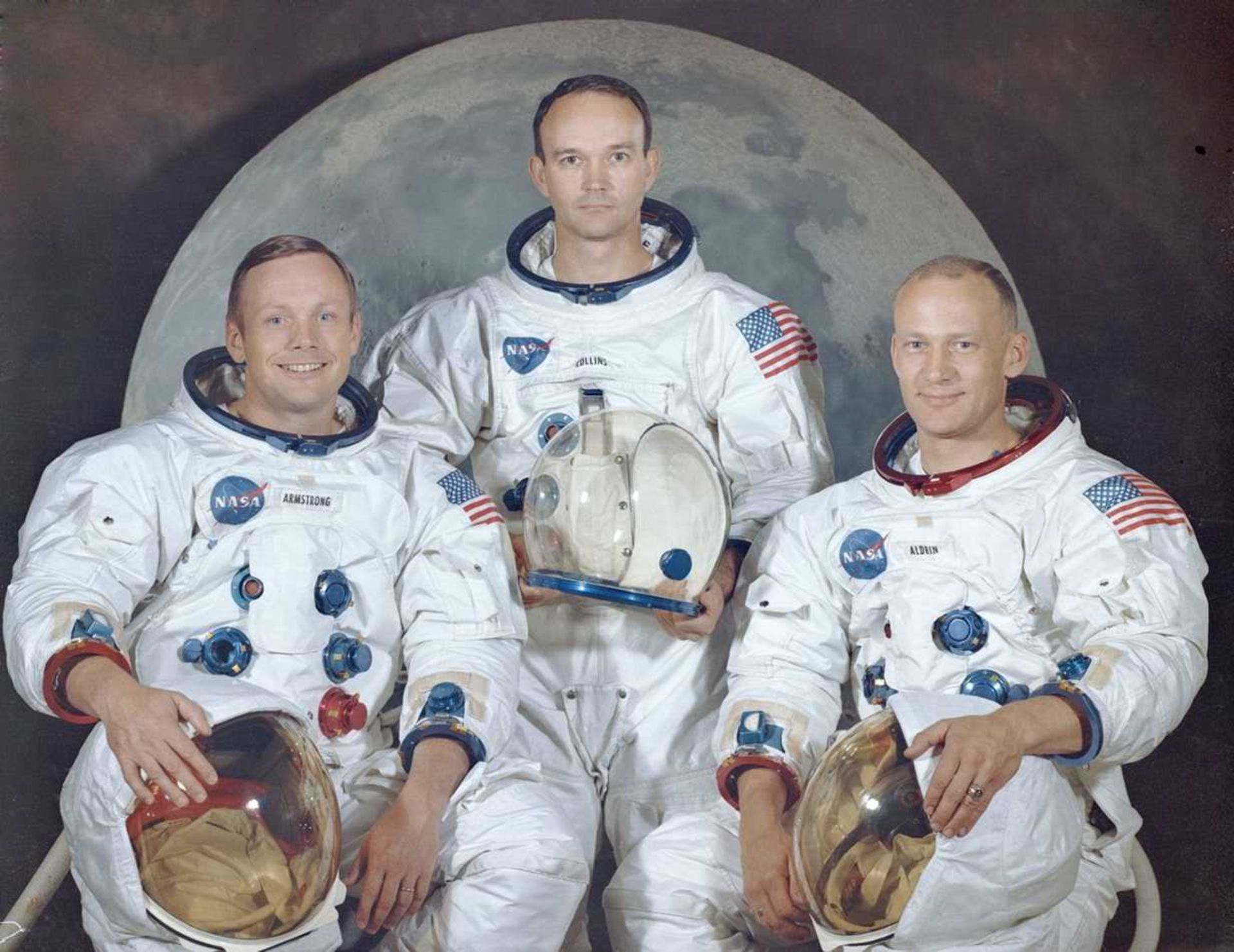
But in reality, our understanding of the moon is still very little, especially in relation to long-term missions. Now, with a 50-year gap between the Apollo missions and NASA’s upcoming Artemis project, the knowledge gained has been lost as engineers and specialists retire. David says:
We need to recover our ability to travel into deep space. We haven’t gone beyond near-Earth orbit since Apollo 17 and since 1972. NASA is no longer the same organization that put men on the moon, and there is a whole new generation of mission operators.
The importance of redundancy
As the first private spacecraft entered into orbit around the moon, the Space project was of considerable importance; But its failure to land smoothly on the surface of the moon made the achievement of landing on the surface of the moon still remain in the hands of governments. However, we can expect more private companies, such as Jeff Bezos ‘ Blue Origin, which is developing its lunar lander, to target the moon in the future. According to Elon Musk, even the giant SpaceX Starship spacecraft, which is being built with the ultimate goal of sending a human mission to Mars , can also land on the moon.
According to David, private companies’ participation in lunar landings has advantages such as increased innovation. However, companies are under pressure to save money, and this can lead to a lack of redundancy and support systems that are essential in the event of errors and malfunctions. Lunar rovers typically include two or even three layers of support systems. David is concerned that private companies will be encouraged to eliminate these redundancies in order to cut costs and save money.

Crew Dragon SpaceX passenger capsule
“We saw Elon Musk’s Dragon capsule catch fire after a failed test on the stand,” says David, referring to the explosion of the SpaceX spacecraft in April, which had no crew on board. “This accident was kind of a wake-up call about how unpredictable the performance of spacecraft can be.” David compared the Crew Dragon incident to the Apollo 1 disaster, which killed three NASA astronauts during a test launch in 1967.
Another problem related to the lack of redundancy systems is the lack of information needed when an error occurs. As for the recent landings, it seems that the SpaceX crash was caused by human error; however, it is not clear what caused the failure of Chandrayaan 2 in the calm landing, and it is possible that without the necessary systems to record and send information to the lander, we will never find out the main reason for the failure of this mission. Without the required data, it becomes much more difficult to prevent problems from reoccurring in the future.
The future of lunar landings
Currently, many projects are underway to facilitate future moon landings. Ultimately, we need to be able to build the necessary infrastructure for a long-term stay on the moon.
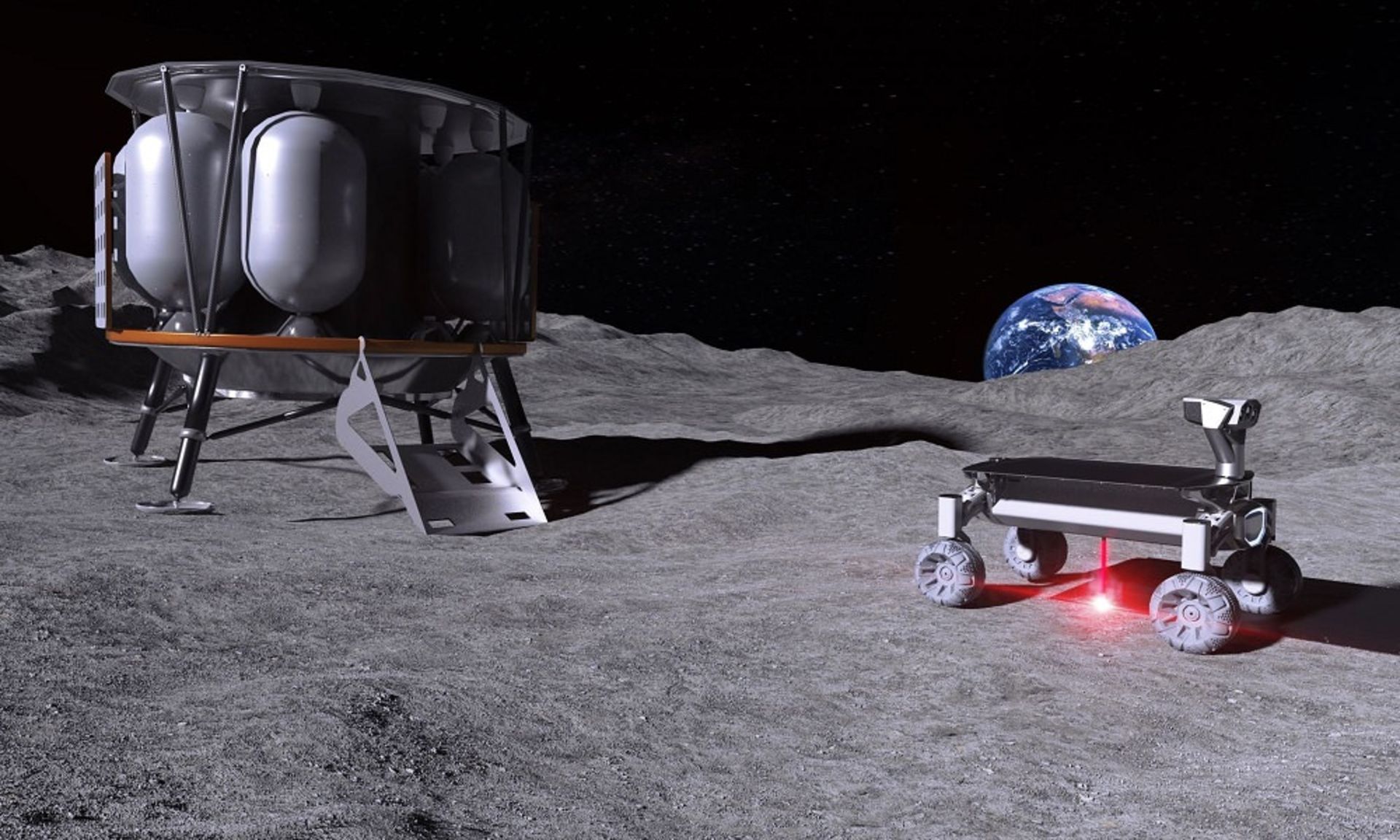
Conceptual design of Moonrise technology on the moon. On the left side is the Alina lunar module, and on the right side, the lunar rover equipped with Moonrise technology melts the lunar soil with the help of a laser.
If we can make long-term stays on the moon possible, or even build a permanent base there, landing spacecraft on the lunar surface will be much easier. By constructing the landing sites, a flat, safe, and free surface of unknown debris can be created for the landing of surface occupants. For example, researchers are currently conducting research at NASA’s Kennedy Space Center to investigate the feasibility of using microwaves to melt the lunar soil (regolith) and turn it into a hard foundation so that it can be used as a landing and launch site. The European Space Agency is also investigating how to use 3D printing to create landing sites and other infrastructure on the moon.
Read more: Europa Clipper, NASA’s flagship probe was launched
Other ideas include the use of lidar remote sensing systems, which are similar to radar systems; But instead of radio waves, it uses lasers to land the spacecraft. Lidar technology provides more accurate readings and uses a network of GPS satellites to help guide the spacecraft during landing.
The problem of public support
As important as technology is, public interest and support are essential to the success of the lunar landing program. “Apollo had enormous resources that are perhaps only comparable today to China’s space program,” says Riley. “Remember that Apollo carried the best computer imaginable, the human brain.” It goes without saying that there is an element of luck involved in every landing.
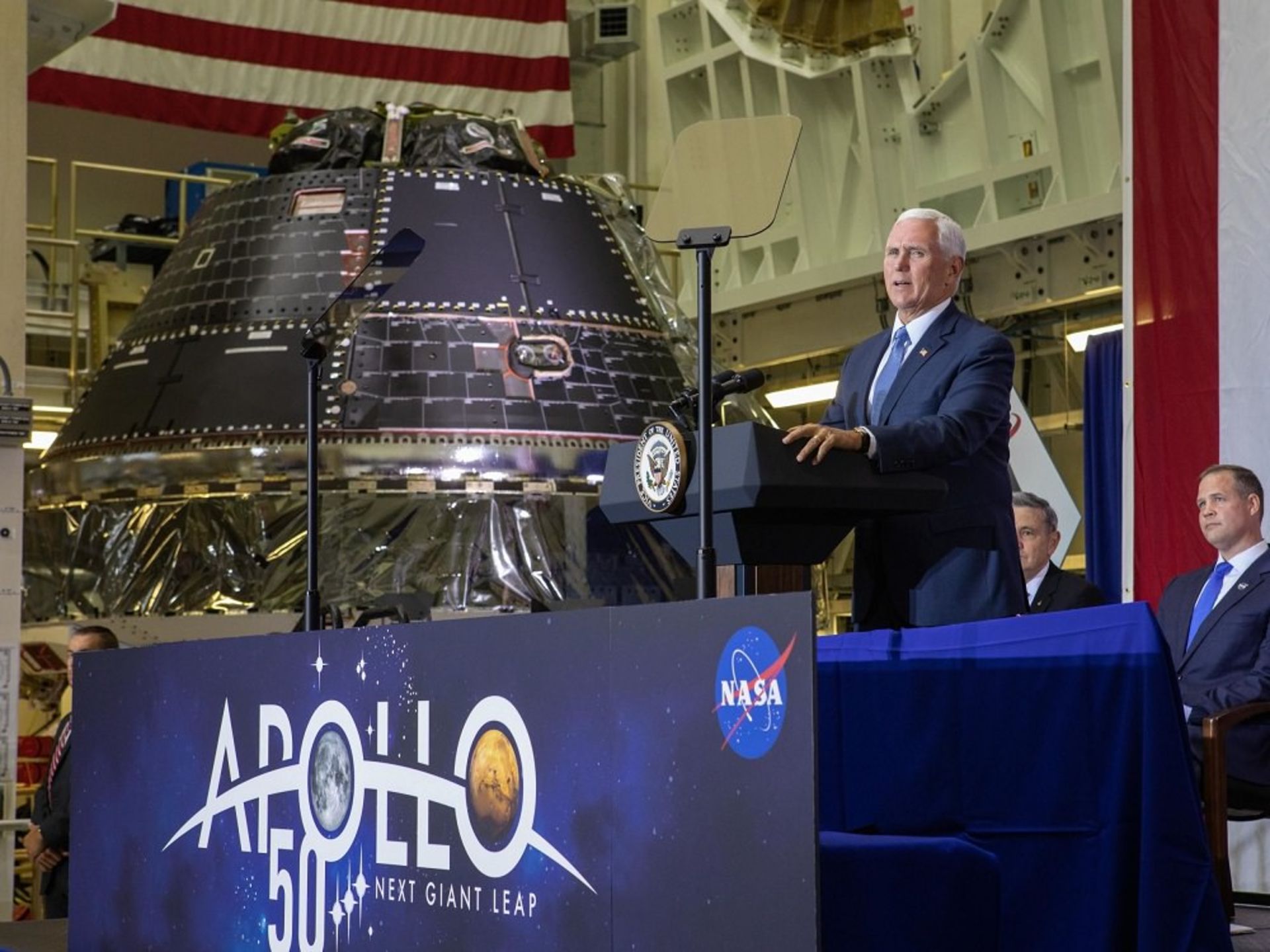
US Vice President Mike Pence speaking at the 50th anniversary of the Apollo 11 mission
Finally, there is the question of what kind of failure is acceptable for people. David says:
I think we have to be serious about the fact that we’re probably going to lose people. There is a serious possibility that the manned lunar lander will crash and kill the astronauts inside. The American people continued to support NASA despite the failures and bad luck of the Apollo program, But at that time there was a lot of pressure to compete with the Soviet Union. Without the bipolar atmosphere of the Cold War and the space race, would people still support missions with human lives in between?


Europa Clipper, NASA’s flagship probe was launched
After years of waiting, NASA’s Europa Clipper probe was finally launched on Monday at 7:36 p.m. Iran time from the Kennedy Space Center on top of SpaceX’s Falcon Heavy rocket and began a major astrobiology mission to Europa, the potentially habitable moon of Jupiter.
As SpaceX’s massive rocket powered by 27 powerful Merlin engines lifted off from pad 39A, NASA live broadcast reporter Dron Neal said, “The launch of Falcon Heavy with Europa Clipper will reveal the secrets of the vast ocean beneath the icy crust of Europa, Jupiter’s moon. It has been hidden, it will reveal.”
The engines of the two side boosters of the Falcon Heavy were shut down and separated from the central booster approximately three minutes after the flight. The central booster continued to fly for another minute, and then in the fourth minute of the launch, the separation of the upper stage from the first stage was confirmed. Finally, 58 minutes later, Europa Clipper was injected into interplanetary orbit as scheduled. A few minutes later, the mission team made contact with the probe, and people in the control room cheered and applauded.
Falcon Heavy’s unique launch
The launch of NASA’s new probe was delayed due to some mishaps. NASA and SpaceX initially planned to launch the Europa Clipper mission on Thursday, October 10; But with powerful Hurricane Milton hitting Florida’s Gulf Coast on Wednesday evening, a delay in the launch became inevitable. NASA shut down Kennedy Space Center to deal with the storm, and Europa Clipper was placed inside SpaceX’s hangar near Launch Pad 39A.
The recent launch was Falcon Heavy’s 11th flight overall and its second interplanetary mission. Also, this was the first flight of the Falcon Heavy, when all three boosters of the first stage of the rocket were deployed.
Typically, the Falcon Heavy and Falcon 9 first-stage boosters store enough fuel to perform landing maneuvers for recovery and reuse in the future; But Europa Clipper needed all the power that Falcon Heavy could provide in order to make it on its way to the Jupiter system.
A long way to the launch pad
In late 2015, the US Congress directed NASA to launch Europa Clipper using the Space Launch System (SLS), NASA’s massive rocket. SLS was still under construction at the time and was several years away from reaching the launch pad. The delay in completing the construction of this powerful rocket and NASA’s need to assign at least the first three versions of SLS to the Artemis lunar mission caused the Europa Clipper launch date to be in an aura of uncertainty.
In the 2021 House budget draft for NASA, the agency was directed to launch Europa Clipper by 2025 and, if possible, with SLS. However, due to the unavailability of the Space Launch System, NASA had to go to SpaceX’s Falcon Heavy. This decision was not without cost. As the most powerful rocket ever used in an operational mission, SLS can send Europa Clipper directly to the Jupiter system in less than three years.
Europa Clipper will use the gravitational assistance of Mars and Earth on its way to the Jupiter system
Now, even in Falcon Heavy’s fully disposable mode, the Clipper’s trip to Europe takes almost twice as long. The probe should make a flyby of Mars in February 2025 and a flyby of Earth in December 2026 to gain enough speed to reach its destination in April 2030.
Missile problems were not the only obstacles facing Europa Clipper on its way to the launch pad. For example, the rising costs of this five billion dollar probe forced NASA to cancel the construction of one of the probe’s science instruments. This instrument, named “Identification of Europa’s internal features using a magnetometer” (ICEMAG), was designed to measure Europa’s magnetic field.
Then in May 2024, NASA found that transistors similar to those used in Europa Clipper, which are responsible for regulating the probe’s electricity, were “failing at lower-than-expected radiation doses.” Following this discovery, NASA conducted more tests on the transistors and finally concluded in late August that these components could support the initial mission in the radiation-rich environment around Jupiter.
Ambitious mission to a fascinating moon

NASA/Jet Propulsion Laboratory-Caltech
Europa Clipper is one of NASA’s most exciting and ambitious flagship missions, and it has impressive features. For example, the mission probe is the largest spacecraft NASA has ever built for a planetary mission. Europa Clipper weighed almost 6,000 kg at the time of launch and will be more than 30 meters long (bigger than a basketball court) by opening its huge solar panels in space.
Clipper’s Europa destination is also a prominent location: Europa, one of Jupiter’s four Galilean moons. The moon is covered with an icy outer shell, which scientists believe hides a vast ocean of salty liquid water. For this reason, Europa is considered one of the best places in the solar system to support alien life.
In early 2012, studies began to look for potential plumes of water rising from Europa’s surface. Some researchers theorize that those water columns and vents from which the columns protrude may contain evidence of life living beneath the moon’s icy crust. However, NASA scientists have made it clear that Europa Clipper is not looking for extraterrestrial life in Europa; Rather, this probe will only investigate the potential of the submoon water environment to support life.
“If there’s life on Europa, it’s going to be under the ocean,” Bonnie Buratti, senior Europa Clipper scientist at NASA’s Jet Propulsion Laboratory, said in September. As a result, we cannot see it.” “We will be looking for organic chemicals that are prerequisites for life on the surface of the moon,” Borrati added. There are things we can observe; such as DNA or RNA; But we don’t expect to see them. As a result, [the probe] is only looking for habitable environments and evidence for the ingredients of life, rather than life itself.”
NASA scientists have made it clear that Europa Clipper is not looking for extraterrestrial life in Europa
Europa Clipper will collect data using a suite of nine scientific instruments, including visible and thermal cameras, several spectrometers, and special equipment to identify Europa’s magnetic environment. As stated on NASA’s Europa Clipper page, the probe will help scientists achieve three main goals:
- Determining the thickness of Europa’s ice sheet and understanding how Europa’s ocean interacts with the lunar surface.
- Investigating the composition of Europa’s ocean to determine whether it has the materials necessary to form and sustain life.
- Studying the formation of Europe’s surface features and discovering signs of recent geological activities; such as the sliding of crustal plates or the discharge of water columns in space.
Europa Clipper also transports Earth’s culture to the Solar System. A piece called “In Praise of Mystery: A Poem for Europe” by Edda Lemon, a famous American poet, is engraved in the artist’s own handwriting on a metal plate. In addition, the probe carries a coin-sized chip that contains the names of 2.6 million inhabitants of planet Earth.
6-year journey

Johns Hopkins University Applied Physics
If all goes according to plan, Europa Clipper will enter Jupiter’s orbit in April 2030. When the probe gets there, it will use up 50-60% of its 2,722 kg of fuel by performing an injection maneuver for 6-8 hours.
The injection maneuver puts Europa Clipper in an elliptical orbit around the gas giant. A series of long maneuvers will then be performed to align the trajectory so that the probe can fly by Europa more than 45 times and study it closely. In fact, Europa Clipper will remain around Jupiter throughout its mission; Because according to the launch environment of Europa, it will be very dangerous for the spacecraft to go around the moon.
If all goes according to plan, Europa Clipper will enter Jupiter’s orbit in April 2030
The first flight over Europe will not take place before the spring of 2031. NASA will use the first pass to make further corrections to Europa Clipper’s trajectory in preparation for the probe’s first science mission. With the start of scientific flybys in May 2031, Europa Clipper will aim its array of sensors towards the far hemisphere from Jupiter and will approach the surface of the moon up to 25 km. The second science campaign will begin two years later, in May 2033, in the Jupiter-facing hemisphere of Europa.
The end of the Europa Clipper mission is set for September 2034. At that time, NASA will crash the spacecraft into Ganymede, another Galilean moon of Jupiter. This disposal strategy was chosen because Ganymede is considered a relatively poor candidate to host life, and the mission team wanted to make sure they did not contaminate potentially life-hosting Europa with terrestrial microbes.
Space
Dark matter and ordinary matter can interact without gravity!
Published
3 weeks agoon
01/10/2024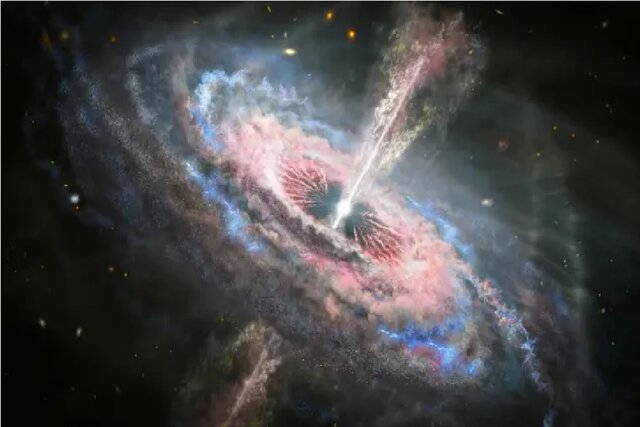

Preposition: For each; per.
Noun: A topology name.
Noun: which has mass but which does not readily interact with normal matter except through gravitational effects.
Adverb: Beyond all others.
Preposition: For each; per.
Noun: A topology name.
Dark matter and ordinary matter can interact without gravity!
Why is dark matter associated with the adjective “dark”? Is it because it harbors some evil forces of the universe or hidden secrets that scientists don’t want us to know? No, it is not. Such fanciful assumptions may sound appealing to a conspiracy theorist, but they are far from the truth.
Dark matter is called dark because it does not interact with light. So when dark matter and light collide, they pass each other. This is also why scientists have not been able to detect dark matter until now; it does not react to light.
Although it has mass and mass creates gravity, this means that dark matter can interact with normal matter and vice versa. Such interactions are rare, and gravity is the only known force that causes these two forms of matter to interact.
However, a new study suggests that dark matter and ordinary matter interact in ways other than gravity.
If this theory is correct, it shows that our existing models of dark matter are somewhat wrong. In addition, it can lead to the development of new and better tools for the detection of dark matter.
Read more: There is more than one way for planets to be born
A new missing link between dark and ordinary matter
Dark matter is believed to have about five times the mass of normal matter in our universe, which helps hold galaxies together and explains some of the motions of stars that don’t make sense based on the presence of visible matter alone.
For example, one of the strongest lines of evidence for the existence of dark matter is the observation of rotation curves in galaxies, which show that stars at the outer edges of spiral galaxies rotate at rates similar to those near the center. These observations indicate the presence of an invisible mass.
Also, for their study, the researchers studied six ultra-dim dwarf (UFD) galaxies located near the Milky Way. However, in terms of their mass, these galaxies have fewer stars than they should. This means they are mostly made up of dark matter.
According to the researchers, if dark matter and normal matter interact only through gravity, the stars in these UFDs should be denser in the centers and more spread out toward the edges of the galaxies. However, if they interact in other ways, the star distribution looks different.
The authors of the study ran computer simulations to investigate both possibilities. When they tested this for all six ultra-dim dwarf (UFD) galaxies, they found that the distribution of stars was uniform, meaning that the stars were spread evenly across the galaxies.
This was in contrast to what is generally observed for gravitational interactions between dark matter and normal matter.
What causes this interaction?
The results of the simulations showed that gravity is not the only force that can make dark matter and normal matter interact. Such an interaction has never been observed before, and it could change our understanding of dark matter and dark energy.
However, this study has a major limitation. What caused the interaction between the two forms of matter is still a mystery. While the current study provides tantalizing hints of a novel interaction, its exact nature and underlying causes remain unknown. Hopefully, further research will clarify the details of such interactions.
This study was published in The Astrophysical Journal Letters.


Ancient humans survived the last ice age just fine


iPhone 16 Pro Review


Why is the colon cancer increasing in people younger than 50?


Why is it still difficult to land on the moon?


Biography of Geoffrey Hinton; The godfather of artificial intelligence


The Strawberry Project; The OpenAI artificial intelligence model


Everything you need to know about the Windows Blue Screen of Death


Starlink; Everything you need to know about SpaceX Satellite Internet


iOS 18 review: A smart update even without Apple’s intelligence


There is more than one way for planets to be born
Popular
-



 Technology1 year ago
Technology1 year agoWho has checked our Whatsapp profile viewed my Whatsapp August 2023
-



 Technology1 year ago
Technology1 year agoSecond WhatsApp , how to install and download dual WhatsApp August 2023
-



 Technology1 year ago
Technology1 year agoHow to use ChatGPT on Android and iOS
-



 AI2 years ago
AI2 years agoUber replaces human drivers with robots
-



 Technology1 year ago
Technology1 year agoThe best Android tablets 2023, buying guide
-



 Technology1 year ago
Technology1 year agoThe best photography cameras 2023, buying guide and price
-



 Humans2 years ago
Humans2 years agoCell Rover analyzes the inside of cells without destroying them
-



 Technology1 year ago
Technology1 year agoHow to prevent automatic download of applications on Samsung phones

